CUPRA Formentor vs Hyundai Kona – Differences & prices compared
Both models have their strengths – but which one suits you more?
Compare performance, efficiency, price and space directly: CUPRA Formentor or Hyundai Kona?
Here’s where it gets real: The technical differences in detail
Costs and Efficiency: When it comes to price and running costs, the biggest differences usually appear. This is often where you see which car fits your budget better in the long run.
Hyundai Kona has a significantly advantage in terms of price – it starts at 23100 £, while the CUPRA Formentor costs 35200 £. That’s a price difference of around 12184 £.
Fuel consumption also shows a difference: the CUPRA Formentor manages with 0.40 L and is therefore significantly more efficient than the Hyundai Kona with 4.60 L. The difference is about 4.20 L per 100 km.
As for range, the Hyundai Kona performs decisively better – achieving up to 514 km, about 388 km more than the CUPRA Formentor.
Engine and Performance: Under the bonnet, it becomes clear which model is tuned for sportiness and which one takes the lead when you hit the accelerator.
When it comes to engine power, the CUPRA Formentor has a distinct edge – offering 333 HP compared to 218 HP. That’s roughly 115 HP more horsepower.
In acceleration from 0 to 100 km/h, the CUPRA Formentor is clearly quicker – completing the sprint in 4.80 s, while the Hyundai Kona takes 7.80 s. That’s about 3 s faster.
In terms of top speed, the CUPRA Formentor performs slightly better – reaching 250 km/h, while the Hyundai Kona tops out at 210 km/h. The difference is around 40 km/h.
There’s also a difference in torque: the CUPRA Formentor pulls evident stronger with 420 Nm compared to 265 Nm. That’s about 155 Nm difference.
Space and Everyday Use: Cabin size, boot volume and payload all play a role in everyday practicality. Here, comfort and flexibility make the difference.
Both vehicles offer seating for 5 people.
In curb weight, the Hyundai Kona is barely noticeable lighter – 1370 kg compared to 1434 kg. The difference is around 64 kg.
In terms of boot space, the Hyundai Kona offers slight more room – 466 L compared to 450 L. That’s a difference of about 16 L.
In maximum load capacity, the CUPRA Formentor performs somewhat better – up to 1505 L, which is about 205 L more than the Hyundai Kona.
When it comes to payload, CUPRA Formentor minimal takes the win – 526 kg compared to 490 kg. That’s a difference of about 36 kg.
Our conclusion: The CUPRA Formentor proves to be leaves the rival little chance and thus becomes our DriveDuel Champion!
Overall, CUPRA Formentor is the better all-rounder in this comparison.
CUPRA Formentor
The CUPRA Formentor captures attention with its striking design and dynamic presence on the road. Inside, it offers a refined interior that harmonises sporty touches with modern technology, creating an engaging driving environment. Its agile handling and performance-oriented features make it a standout choice for those seeking an exhilarating driving experience.
details @ seat-mediacenter.com
@ seat-mediacenter.com
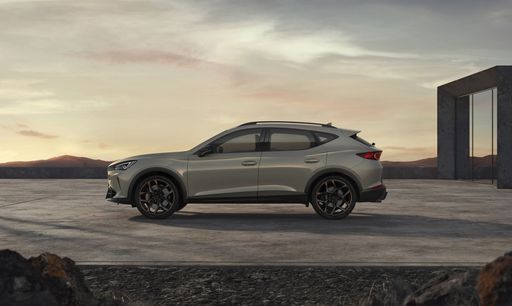 @ seat-mediacenter.com
@ seat-mediacenter.com
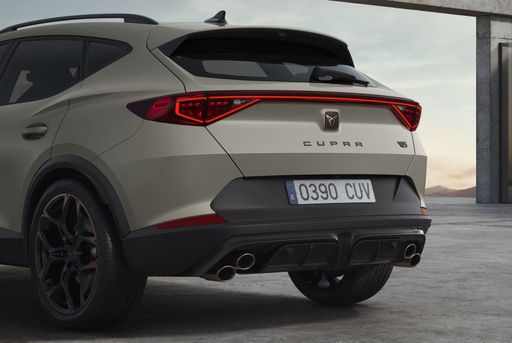 @ seat-mediacenter.com
@ seat-mediacenter.com
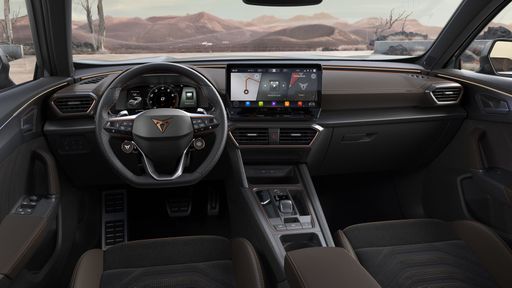 @ seat-mediacenter.com
@ seat-mediacenter.com
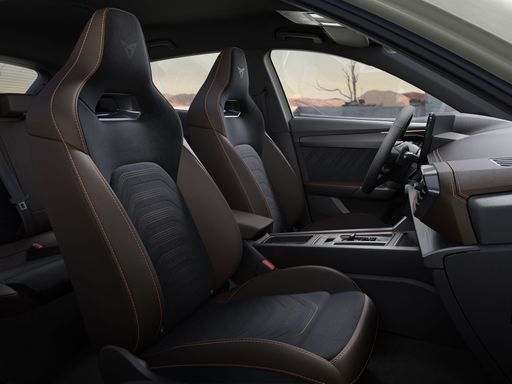 @ seat-mediacenter.com
@ seat-mediacenter.com
Hyundai Kona
The Hyundai Kona blends a bold design with a versatile interior, making it a standout choice in the compact SUV market. Its crisp handling and responsive steering provide an engaging driving experience, whether in the city or on the open road. The vehicle also offers a range of features designed to enhance comfort and connectivity, ensuring a pleasurable journey for both driver and passengers.
details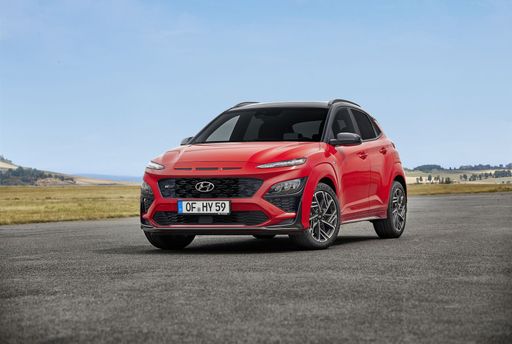 @ hyundai.news
@ hyundai.news
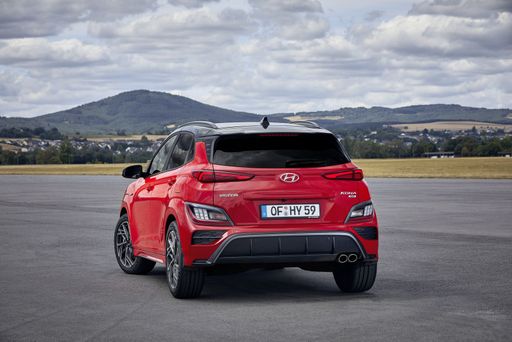 @ hyundai.news
@ hyundai.news
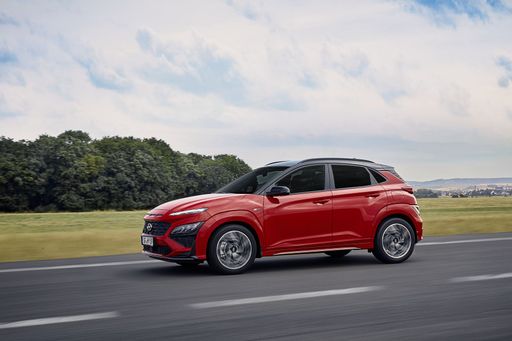 @ hyundai.news
@ hyundai.news
 @ hyundai.news
@ hyundai.news

|

|
|
|
|
Costs and Consumption |
|
|---|---|
|
Price
35200 - 55000 £
|
Price
23100 - 41600 £
|
|
Consumption L/100km
0.4 - 8.8 L
|
Consumption L/100km
4.6 - 7 L
|
|
Consumption kWh/100km
-
|
Consumption kWh/100km
14.6 - 16.8 kWh
|
|
Electric Range
117 - 126 km
|
Electric Range
377 - 514 km
|
|
Battery Capacity
19.70 kWh
|
Battery Capacity
1.3 - 65.4 kWh
|
|
co2
8 - 199 g/km
|
co2
0 - 163 g/km
|
|
Fuel tank capacity
40 - 55 L
|
Fuel tank capacity
38 - 47 L
|
Dimensions and Body |
|
|---|---|
|
Body Type
SUV
|
Body Type
SUV
|
|
Seats
5
|
Seats
5
|
|
Doors
5
|
Doors
5
|
|
Curb weight
1434 - 1742 kg
|
Curb weight
1370 - 1773 kg
|
|
Trunk capacity
345 - 450 L
|
Trunk capacity
466 L
|
|
Length
4451 mm
|
Length
4350 - 4385 mm
|
|
Width
1839 mm
|
Width
1825 mm
|
|
Height
1511 - 1537 mm
|
Height
1580 - 1585 mm
|
|
Max trunk capacity
1415 - 1505 L
|
Max trunk capacity
1300 L
|
|
Payload
458 - 526 kg
|
Payload
420 - 490 kg
|
Engine and Performance |
|
|---|---|
|
Engine Type
Plugin Hybrid, Petrol, Petrol MHEV, Diesel
|
Engine Type
Electric, Petrol, Full Hybrid
|
|
Transmission
Automatic, Manuel
|
Transmission
Automatic, Manuel
|
|
Transmission Detail
Dual-Clutch Automatic, Manual Gearbox
|
Transmission Detail
Manual Gearbox, Dual-Clutch Automatic
|
|
Drive Type
Front-Wheel Drive, All-Wheel Drive
|
Drive Type
Front-Wheel Drive, All-Wheel Drive
|
|
Power HP
150 - 333 HP
|
Power HP
115 - 218 HP
|
|
Acceleration 0-100km/h
4.8 - 9 s
|
Acceleration 0-100km/h
7.8 - 11.9 s
|
|
Max Speed
205 - 250 km/h
|
Max Speed
162 - 210 km/h
|
|
Torque
250 - 420 Nm
|
Torque
200 - 265 Nm
|
|
Number of Cylinders
4
|
Number of Cylinders
3 - 4
|
|
Power kW
110 - 245 kW
|
Power kW
85 - 160 kW
|
|
Engine capacity
1498 - 1984 cm3
|
Engine capacity
998 - 1598 cm3
|
General |
|
|---|---|
|
Model Year
2024 - 2025
|
Model Year
2024 - 2025
|
|
CO2 Efficiency Class
B, G, E, D, F
|
CO2 Efficiency Class
A, D, C, E, F
|
|
Brand
CUPRA
|
Brand
Hyundai
|
What drive types are available for the CUPRA Formentor?
Available configurations include Front-Wheel Drive or All-Wheel Drive.
The prices and data displayed are estimates based on German list prices and may vary by country. This information is not legally binding.
